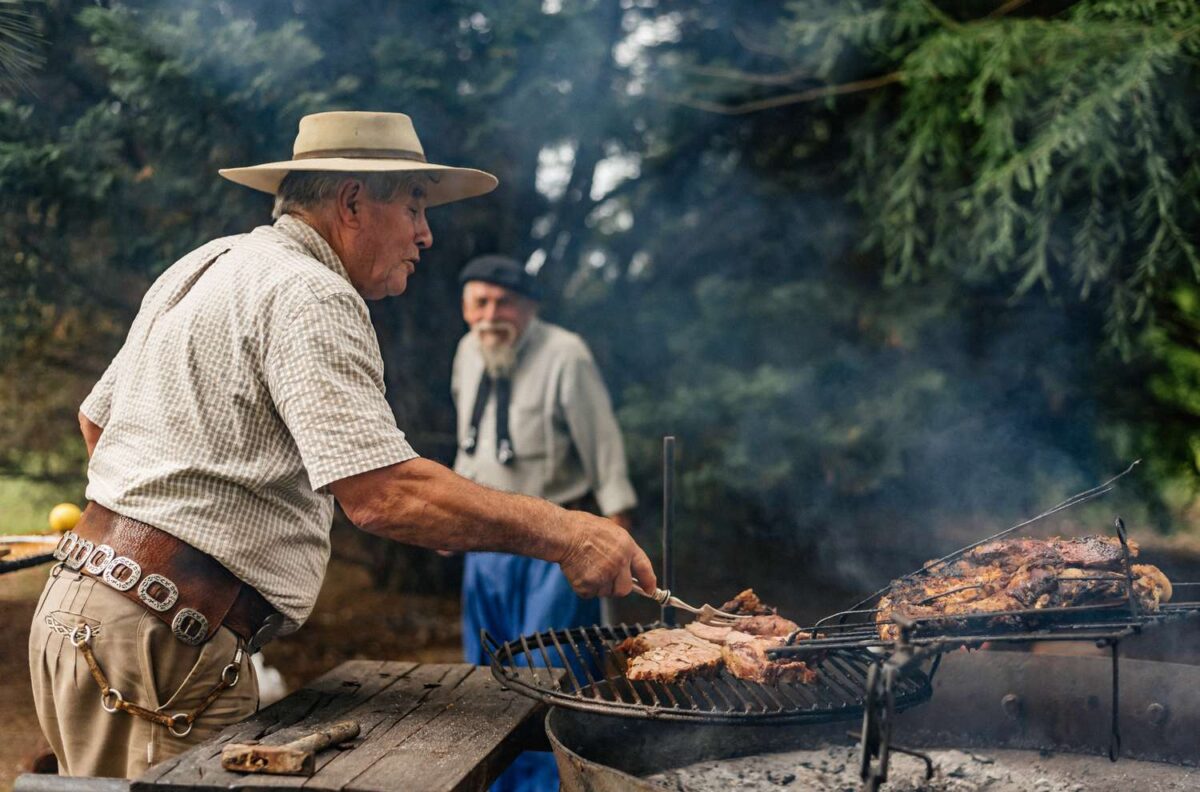Unlock the Secrets: 7 Global cooking styles worth mastering now

Explore 7 global cooking styles you’ll want to try. Image Credit: Getty Images
In a world increasingly connected by food, mastering cooking styles from different cultures isn’t just fun, it’s transformative. Whether you’re searing a Japanese teppanyaki plate, slow-braising a Moroccan tagine or stir-frying Chinese-style, each technique carries distinct flavor profiles, texture changes, and cultural stories. By embracing these 7 global methods, you’ll deepen your culinary skill set, enjoy richer tastes and expand your home-cooking repertoire.
1. Stir-Fry: Fast, High-Heat and Full of Texture
Originating in China, stir-frying uses a wok or wide pan over high heat, with quick tossing and minimal oil. This method locks in ingredients’ natural crunch, bright colors and fresh flavor.
Perfect for veggies, thinly sliced meat or seafood, stir-fry is all about speed, precision and heat management. Getting the “snap” of the vegetables right is key.
2. Clay-Pot or Tagine Cooking: Slow, Gentle and Flavor-Infused
Across North Africa and other regions, cooking in a clay vessel, such as a Moroccan tagine or Ethiopian clay pot, brings gentle heat, slow-cooked depth and aromatic richness.
The porous nature of the clay helps retain moisture and slowly infuse flavors. Great for stews, braises and dishes meant to simmer for longer, delivering rich taste with minimal effort.
3. Barbecue & Smoking: Low-and-Slow with Charred Flavor
From the Caribbean’s wood-smoked traditions to American slow-cooked brisket, barbecue means time, fire, smoke and flavor.
It’s less about ingredients and more about technique, managing coals or wood, controlling temperature, achieving tender, smoky results. Learning this style opens up a BBQ world beyond burgers.
READ ALSO
10 Signs You’re Not Getting Enough Fiber
10 Simple Food Swaps for Weight Management
4. Teppanyaki & Iron-Plate Cooking: The Show-Stopper Method
Hailing from Japan, teppanyaki involves grilling on a flat iron plate or griddle. It’s theatrical, fast, and interactive.
You’ll chop, toss and cook ingredients in front of guests or family, transforming dinner into performance. Vegetables, meats and noodles come together with flair and flavor.
5. Tadka (Tempering) & Spice-Blooming: Indian Flavor Foundations
In Indian cuisine, the technique of tadka (or tempering spices) involves sizzling spices in hot oil to release aroma and flavor before adding other ingredients.
Mastering this opens up a world of depth, layering spices, using ghee or oil wisely, and building complexity in your dishes.
6. Steaming in Leaves / En Papillote: Gentle Heat, Big Impact
Steaming, whether in banana leaves, bamboo steamers or foil packets, in Asia or elsewhere is a style focused on preserving natural flavors, textures and nutrition.
It’s ideal for delicate fish, vegetables or dumplings. The method is gentle yet powerful, showing that high-heat isn’t the only way to delicious results.
7. Roasting & Baking: Universal, Versatile, Flavor-Rich
Dry-heat cooking methods like roasting or baking are everywhere, but each culture brings its own twist. From Mediterranean vegetable roasts to Central European baked breads, the technique is simple yet effective.
Learning to manage browning, caramelization and internal cooking will serve you in countless dishes.
Bring These Styles Into Your Home Kitchen
Here’s how you can start:
- Pick one style per week and explore a recipe from that method.
- Invest in one tool (eg a wok, clay pot, iron plate) and practise technique.
- Focus on heat and timing; that’s often what separates good from great.
- Blend styles; once comfortable, adapt a clays-pot stew with a spice-tempering start.
- Keep it fun; each style teaches something new about flavour, culture and kitchen confidence.
Frequently Asked Questions
Q1. What are cooking styles from around the world?
They refer to the various techniques, tools, heat-sources and cultural traditions used globally, such as stir-frying, clay-pot slow cooking, teppanyaki grilling, spice-tempering, steaming in leaves, roasting, and smoking/barbecue. These methods reflect local resources, climate and tradition.
Q2. Why should I learn different global cooking styles?
Because each style teaches unique skills, heat control, flavour layering, technique management, and allows you to cook a broader variety of dishes with confidence. You’ll improve your versatility and deepen your culinary appreciation.
Q3. Is it expensive to try these styles?
Not necessarily. Some require special equipment (eg wok or clay pot), but many use standard kitchen tools. You can scale down, for example, use a heavy pan instead of a professional iron plate. The key is technique, not always gear.
Q4. Which style is easiest to start with?
Roasting or baking is a good entry point. It’s familiar and forgiving. From there you can move into stir-frying or spice-tempering for more dynamic results.
Q5. Do I need special ingredients?
Sometimes yes, especially for authenticity (for example tandoori oven or banana leaves). But many techniques adapt well, use local ingredients and apply the method to what’s available. Technique matters more than exact ingredients.
Q6. Will mastering one style make me a better cook overall?
Definitely. Each style builds a skill that transfers, such as managing heat (stir-fry), layering flavour (tadka), patience (slow braising), control of dryness vs moisture (roasting vs steaming). Combined, you’ll be a more confident cook.
Q7. Can I combine these styles in one dish?
Yes! Many modern chefs blend methods, e.g., spice-tempered ingredients sautéed then transferred to a clay pot for slow braising. Mixing techniques allows creativity and bold results.
Q8. How do I know which method suits a recipe?
Consider the ingredient and desired result: delicate fish → steaming; vegetables with crisp texture → stir-fry; hearty meat needing depth → slow braise or roast; quick interactive dinner → teppanyaki. Choose method to match aim.

